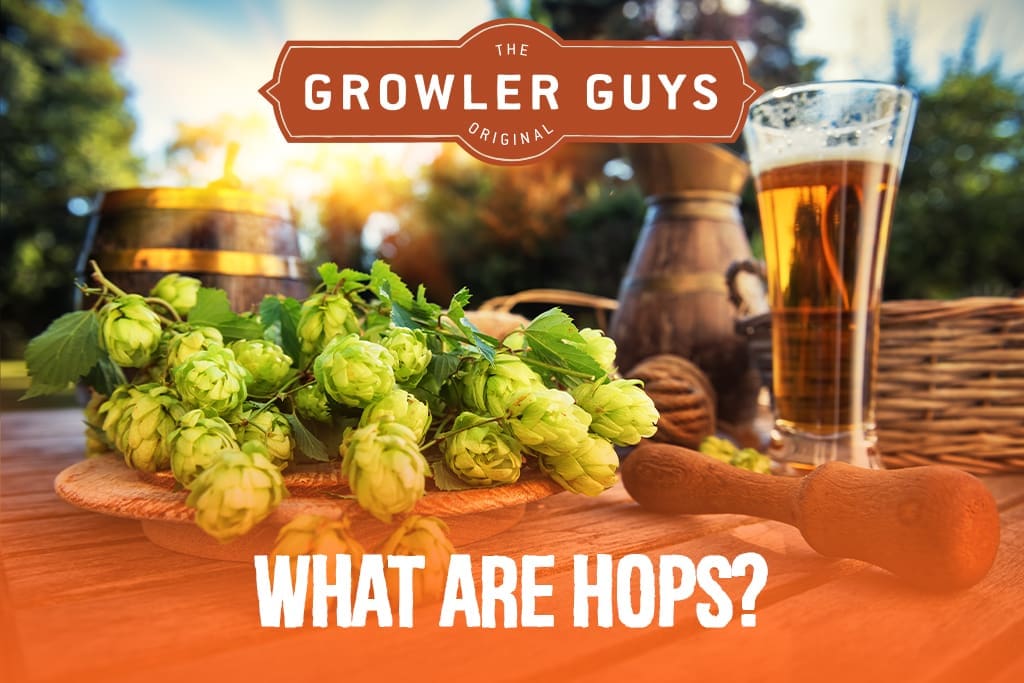 One of the most used words in the craft beer industry is hops. But what exactly are these essential ingredients, and what do they add to your favorite brews? One of beer’s four main ingredients, hops are known for bringing bitterness to the glass, but they’re so much more than that. Let’s break down what they are, how they’re used in the brewing process, and the magic they bring to your favorite pint.
One of the most used words in the craft beer industry is hops. But what exactly are these essential ingredients, and what do they add to your favorite brews? One of beer’s four main ingredients, hops are known for bringing bitterness to the glass, but they’re so much more than that. Let’s break down what they are, how they’re used in the brewing process, and the magic they bring to your favorite pint.
What Are Hops?
Hops come from the Humulus lupulus plant, a fast-growing perennial vine known for producing soft, green cone-like flowers. Within these green cones are tiny yellow lupulin glands containing essential oils and resins that give them flavor and aroma.
There are hundreds of varieties, and each brings a unique mix of citrus, floral, piney, spicy, herbal, or even fruity notes to a brew. The combination of alpha acids and volatile oils in a hop determines how it will influence a beer’s bitterness, aroma, and flavor.
The History of These Essential Ingredients
While beer has been brewed for thousands of years, hops haven’t always been part of the recipe. Early European brewers used a mix of herbs and spices called gruit for flavor and preservation. It wasn’t until the 9th century that hops began appearing in brewing records. By the 13th century, this type of beer had become widely adopted for its longer shelf life and more refined flavor.
Why Hops Matter
Hops serve three primary roles in the brewing process.
1. Bitterness
Hops bring balance – without them, beer would be overly sweet from the malted grains. The resins contain alpha acids, which are chemically changed during the boil to create bitterness. The amount and type used, as well as the length of the boil, determine how much bite the bitterness brings to the beer.
2. Flavor and Aroma
Hops aren’t just bitter, they’re flavorful. Depending on the variety, they can bring notes of grapefruit, melon, pine, grass, berries, or even stone fruit. Aroma hops are added late in the brewing process or after fermentation to retain their delicate, volatile oils.
3. Preservation
Hops are natural antimicrobials that help prevent spoilage. Before the advent of refrigeration, this was a key reason brewers began using them. Today, preservation is less of a concern, but the tradition and flavor benefits live on.
How Brewers Use These Key Ingredients
Brewers use these essential ingredients at multiple stages of the brewing process. Each method highlights different qualities and affects the final beer differently.
Bitter Hops: These are added at the beginning of the boil to extract maximum alpha acids. Flavor Hops: Added mid-boil, these infuse the wort with flavor without too much bitterness. Aroma Hops: These are added at the end of the boil to impart fresh, fragrant notes. Dry Hopping: This occurs after boiling to boost aroma without increasing bitterness. It’s especially popular in hazy IPAs.
Popular Hop Varieties
A few varieties you might recognize from beer labels include Cascade hops. Used in many American Pale Ales, these are floral and citrusy, with notes of grapefruit. Citra hops are popular in hazy IPAs and have bright tropical fruit aromas like mango, lime, and lychee. Simcoe hops provide a mix of pine, stone fruit, and earthiness and are popular in West Coast IPAs. There are hundreds of varieties, and each adds its own character.
Discover the Soul of the Brew at The Growler Guys
So what are hops? They’re the ingredients that make beer truly beer. Subtle or assertive, floral or fruity, these essential ingredients help define the personality of your brew. Savor the complex role they play at your local Growler Guys. Whether you love a bold Double IPA or a more subtle lager, you will surely find it on our extensive rotating tap list. Not sure what to try first? Ask our certified Beer Stewards for their recommendation. Stop in for a pint, flight, or growler fill today.

Reader Interactions